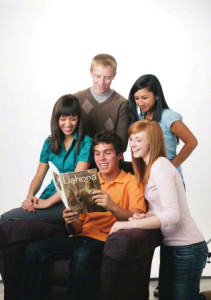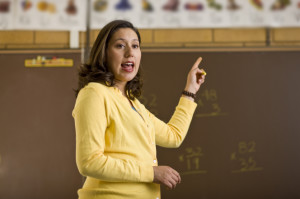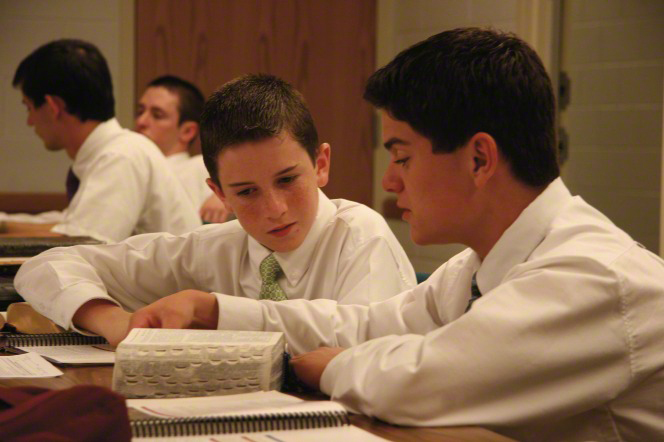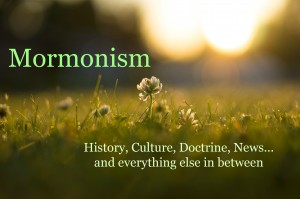 When the Mormons (a nickname for members of The Church of Jesus Christ of Latter-day Saints) launched their new youth program, they put into place a brilliant educational program that could improve even secular high schools. The program is called, “Come, Follow Me” and while the religious nature, of course, wouldn’t work in a public school, the methods are easily adaptable to a school program.
When the Mormons (a nickname for members of The Church of Jesus Christ of Latter-day Saints) launched their new youth program, they put into place a brilliant educational program that could improve even secular high schools. The program is called, “Come, Follow Me” and while the religious nature, of course, wouldn’t work in a public school, the methods are easily adaptable to a school program.
In this program, teachers have transitioned into being mentors. They no longer stand in front of a group of teenagers and lecture for forty minutes. Instead, they choose a topic and then start asking their students questions. For instance, the topic for September, 2014 is commandments. On Sundays, after the worship service, all the Mormon teens meet together for Sunday School. Then they separate into gender-based classes. If there are enough youth, they are also divided by age in each class—two ages per class. The teens will be studying the topic of commandments in each of these classes.
This is an interesting way to do things, because girls in a class that is taught by women and which only has girls in it will often discuss topics differently than they will in a mixed class. The same is true of boys. They may discuss different angles of the subject than they will when they come together in Sunday School. They will gain different perspectives by studying the subject in two different classes and to each class, they will bring what they learned in the other class.
Each class has a list of questions to choose from. Some of the questions for boys are the same as the ones for girls; others are different. The questions were chosen by international leaders who oversee the programs. The program for girls is led entirely by women and the program for boys by men. Teachers and students can choose which sub-topics are most relevant or important to them.
One question both groups are asked is, “How can I be in the world but not of it?” Let’s look at how this question will be tacked in the classroom.
Young Women: How can I be in the world, but not of it?
How Students Learn to Answer Hard Questions
 We’re going to take a look at how the girls will learn the subject. First, the teacher is asked to prepare by reviewing a variety of resources on the topic, both ancient and modern. Then she is asked to choose which of those resources would be most helpful to her own class, making the lesson personalized. That means that if she was to teach this question again next year, it is likely she would do it very differently, since she would have different students with different needs at that moment.
We’re going to take a look at how the girls will learn the subject. First, the teacher is asked to prepare by reviewing a variety of resources on the topic, both ancient and modern. Then she is asked to choose which of those resources would be most helpful to her own class, making the lesson personalized. That means that if she was to teach this question again next year, it is likely she would do it very differently, since she would have different students with different needs at that moment.
The lesson, which is online, can be updated at a moment’s notice. If a Church leader gives a really powerful sermon on the subject tomorrow, it can be added as a resource. If a current event occurs related to it, that can be added.
The teacher is offered a list of possible ways to lead the class. One way is to introduce the question and to ask the girls what they think the question means and if they have any thoughts on it starting out. Another suggestion is to show a video and let that lead to a discussion. If I was teaching a group that I felt would know a lot about the subject, I would choose the first. With less knowledgeable students, I would start with the video.
Then the girls begin to do their research. They study from among the resources offered and share what they learn with their peers. They can each be given an individual resource or they can be asked to study as a group. They are asked follow-up questions to help them dig more deeply into the subject.
Throughout this process, the teacher is guiding the work, helping the students learn how to find answers and to use the resources to learn how to answer the weekly question. This is more challenging for the teacher because, although she makes a plan, she has to be prepared to be flexible. The lesson proceeds according to what happens during the research and discussion phase. The girls, in the course of their work, may come up with complicated questions or unusual angles. The teacher must have spent a great deal of time learning the topic herself in order to be able to adapt quickly to the needs of the girls. At the same time, she needs the self-discipline to refrain from telling the girls the answer. Her responsibility is to teach them how to find it for themselves.
At the end of class, the girls are asked whether or not they feel they need an additional week on the subject. They are also asked to study on their own and to try to have a personal experience with the topic, which they can report on the following week.
How Could Public Schools Benefit from This Method?
 When I was in school, some teachers seemed to feel education involved opening my head and pouring information into it. The best teachers, however, encouraged questions, debate, and thoughtfulness. Many of them are probably already using this method.
When I was in school, some teachers seemed to feel education involved opening my head and pouring information into it. The best teachers, however, encouraged questions, debate, and thoughtfulness. Many of them are probably already using this method.
The world has an extraordinary amount of information available to it, much of which is inaccurate. The Internet makes it easier to find both the good and the bad information. Few know how to do good research in order to find out the truth and weed out the propaganda or gossip. With the proliferation of standardized tests, thinking is less valued.
Imagine students walking into their history class and seeing written on the board, “Why did the early inhabitants of the American continent feel it was okay to take land from the Native Americans?” Their minds would automatically register the question and it is likely they would begin to think about it.
Now imagine the teacher, instead of giving her opinion on the subject, dividing the class into small groups at tables that had books in the center. Each group is given a subtopic question to answer. They are told to take the books, study them, and find the answers. Perhaps they could even be asked to figure out which books were the most valuable.
When they are finished, they come back together and each group teaches the other students what they learned. Then, as a class, they begin to discuss the subject, with the teacher helping them learn to discuss respectfully and guiding the discussion with an occasional follow-up question.
What would be different at the end of the day? It is likely the debate would continue on after class. I once had an English class and a history class that covered the same time period. In English, we read material written during the time we were learning in history. One day we encountered a contradiction between our high school history book and an original source document we read in English. The discussions on the subject went back and forth between the two classes for a few days, fascinating the teachers, since the students were initiating it. It even continued into our lunch breaks for many of us. Our teachers brought in new materials for us to look at so we could find the answers for ourselves, and we took what we learned in one hour into the next.
This is the type of education we want for our students. We want them thinking for themselves, immersing themselves in a topic, and sharing ideas. It is what the Mormon youth program is inspiring—and using the same topic in the public schools could have a powerful impact on our students in schools as well. Study the program and see for yourself what Mormonism can offer your schools, even with the religion taken out.
About Terrie Lynn Bittner
The late Terrie Lynn Bittner—beloved wife, mother, grandmother, and friend—was the author of two homeschooling books and numerous articles, including several that appeared in Latter-day Saint magazines. She became a member of the Church at the age of 17 and began sharing her faith online in 1992.



